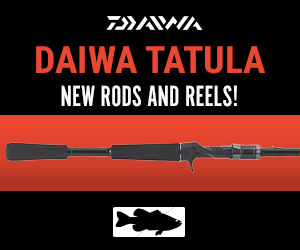Reel Bearings 301: Maintenance, Design, and Troubleshooting (continued)

 Ball
Bearing Troubleshooting:
Most ball bearings used in
today’s higher-end reels are precision grade radial bearings (ABEC1 and higher),
made from stainless steel components. The bearings may incorporate corrosion
resistant configurations and materials (if they are endorsed for use in
saltwater). However, some lower end reels may still use chrome steel, chrome
plated or other material for bearings -- which may or may not meet precision
standards. The old adage “You get what you pay for” often holds true when it
comes to the internal components in today’s reel, and bearings are no exception.
Ball
Bearing Troubleshooting:
Most ball bearings used in
today’s higher-end reels are precision grade radial bearings (ABEC1 and higher),
made from stainless steel components. The bearings may incorporate corrosion
resistant configurations and materials (if they are endorsed for use in
saltwater). However, some lower end reels may still use chrome steel, chrome
plated or other material for bearings -- which may or may not meet precision
standards. The old adage “You get what you pay for” often holds true when it
comes to the internal components in today’s reel, and bearings are no exception.
Corrosion, cleanliness,
lubricant, mounting, alignment, design, and the materials used in a ball bearing
can affect their performance in a reel as described in the two previous articles
in this series. So with use, ball bearings can wear, become damaged, need
lubrication, get dirty, etc. and the bearings should be the first thing to
suspect when a reel doesn’t cast or crank the way it once did. Other components
in a reel may slide, mesh, rotate, etc., but ball bearings (or bushings) carry
the loads and generally affect the “feel” of a reel more than anything else over
time.

Bearing Loads
(left) and Loose Bearing Fit (right)
A typical reel ball
bearing is usually not designed to carry much axial load, but rather carries
mostly radial load on its center race. In relative terms, the largest radial
loads seen in a reel usually occur where pinion and drive gears are supported
and aligned, followed by spool bearings (especially on larger bait casters).
[If extremely large axial loads need to be carried, some reel manufacturers may
even use thrust bearings, axial ball bearings (races are side by side), angular
raced bearing, or incorporate other internal configurations.]
Most reel bearings
incorporate what is called a loose fit (or very-light interference fit)
with the load that they carry. A loose fit is where the center race is not
firmly pressed onto the load, but rather employs light friction to mate with the
center race, and allows some small axial movement of the load through the
bearing race. One of the advantages of a loose fit is that it helps reduce the
axial load on the bearing to allow it to track better while rotating -- the net
effect is the bearing will rotate with less internal friction, will feel
smoother, and any vibration will tend to be dampened while it rotates. That is
why the location where the center race contacts the load may also need to be
periodically cleaned and lubricated, in order to maintain the best bearing
performance. A typical ball bearing cannot tolerate much axial load before its
rotation and the way it feels becomes adversely affected!
Spool bearing problems
seem to occur more frequently than any other bearing problem reported on the
various reel forums. The reason for this is probably due to their high
rotational speed, moderate and variable radial loads they carry, and lighter
lubrication (when compared to other bearings in the reel). Poor casts, strange
noises or vibration during the cast, and a different feel while retrieving
generally indicate a spool bearing problem (more on this later). Drilled spools
and the gap between the side of a spool and the frame can allow water, debris
and foreign material to enter the bearings since oil is typically used for
lubrication instead of grease. Spool bearings can also be affected by
alignment, and if you’ve ever dropped a reel from waist height onto a hard
surface, chances are you’ve had first hand experience in this. A bent spool
shaft due to dropping the reel can result in major bearing alignment problems.

Damaged
Bearing Races Due to High Axial Load (Left) and Shock Axial Loads (Right)
Pinion gears can be
especially troublesome, because they usually slide axially through the center
races of ball bearings, as the reel disengages and reengages with the spool. If
their loose fit is affected by a burr, corrosion or debris, the motion of the
pinion can cause the bearing to periodically see extremely high axial loads
which can lead to premature wear, distorted races, and deformed sockets that the
bearings are mounted in. Stainless steel pinion bearings that have corroded
into their sockets are frequently caused by the repetitive movement of a pinion
bearing in its socket due to fretting. In early stages, the reel may feel a
little harder to crank than it used to be, and may also be accompanied by a
slight increase in audible noise. But as the condition worsens it will often
begin to feel like meshing gears, until eventually the pinion sticks during
travel and the reel will no longer engage or disengage with the spool. The
bearing race shown on the right in the previous picture shows the type of damage
sustained due to a reel repeatedly reengaging during the cast (as a result of a
worn clutch cam). The race damage of the bearing on the left is typical of a
pinion bearing that carried high axial loads from a pinion gear that didn’t
travel as far as it should though its center race.
Ball bearings mounted
directly under drag friction washers can also be troublesome, because they are
usually mounted toward the outside of the reel where they are susceptible to
fouling (e.g. corrosion, sand and debris). This bearing is also susceptible to
the grease being washed out if you regularly rinse your reel after using it in
saltwater. In addition, the drive shaft that travels through their center race
is often threaded and prone to burring. If the loose fit between the drive
shaft and its center races is affected by debris or a burr, the axial movement
of the drive shaft under varying drag settings can cause the handle to feel
rough and noisy when cranking due to high axial load and even a slight bearing
misalignment. If left uncorrected, the ball bearing itself can prematurely wear
or become damaged, which can affect the performance of the clutch bearing
(causing the clutch to slip, have excess back play, or get noisy), if so
equipped. If this particular bearing gets fouled with debris, needs lube, or
gets corroded, it can cause the reel to feel rougher when cranking (and can even
feel/sound like you are turning a coffee grinder), especially at higher drag
settings.

Spin - First
Step in Checking a Radial Ball Bearing Cleanliness and Condition
Next Section:
More troubleshooting





















